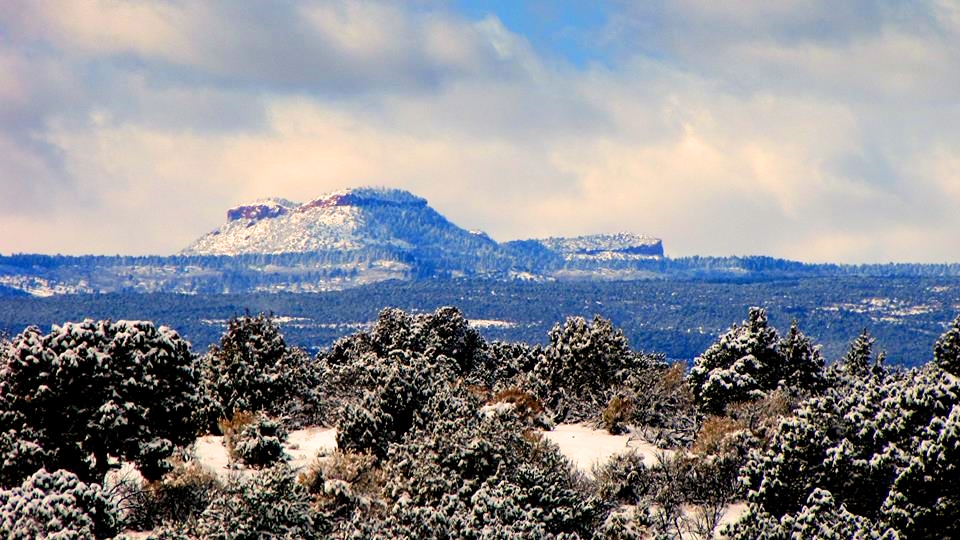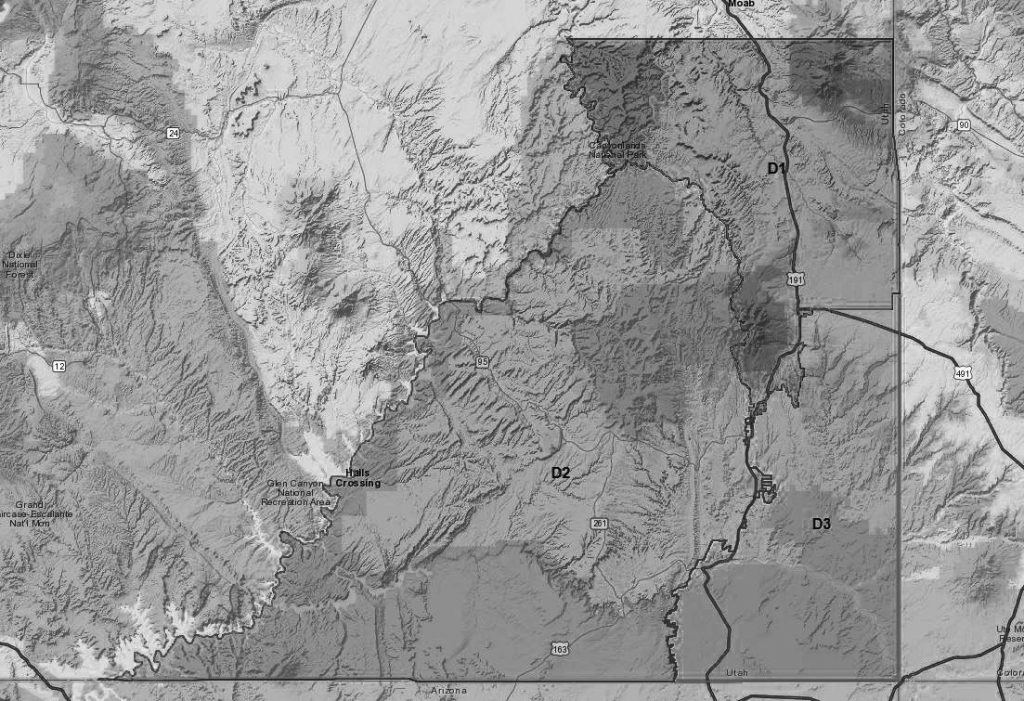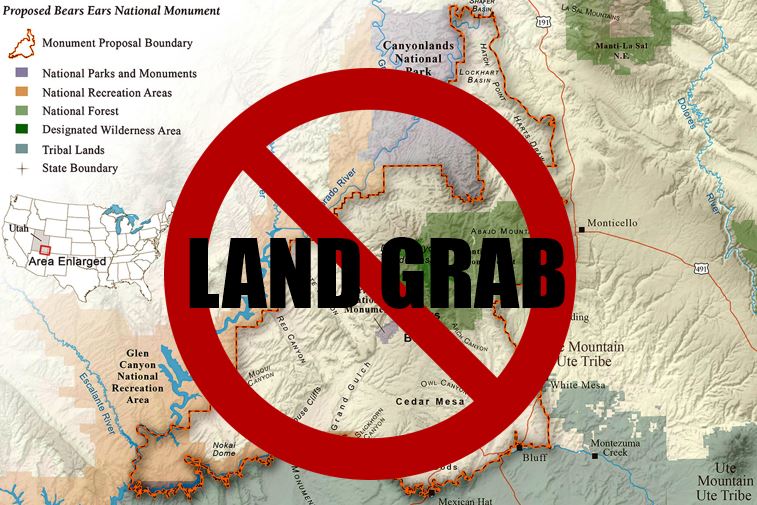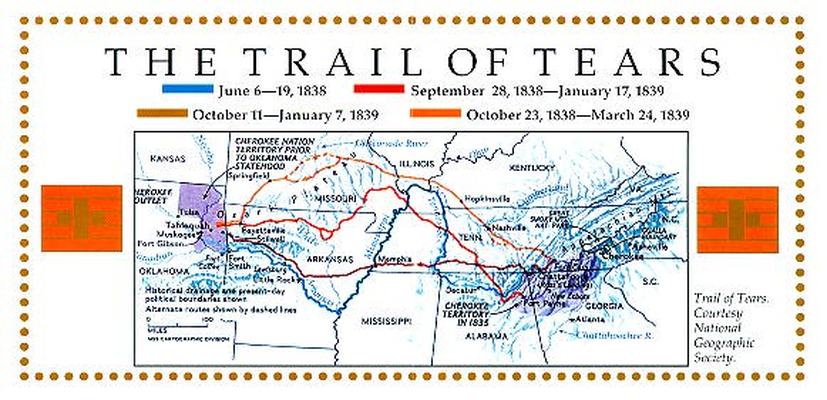FACT: The BLM does not allow oil and gas leasing within BENM. The monument is withdrawn from disposition under all laws relating to mineral leasing, and there are no oil and gas leases in the BENM that predate the monument’s designation.
As posted on the Bureau of Land Management website
Bears Ears National Monument: Myths vs. Facts
MYTH: The BLM did not give American Indian Tribes an opportunity to provide input on the Monument Management Plans.
FACT: The BLM reached out to Tribes through government- to-government consultation, the review process under Section 106 of the National Historic Preservation Act, listening sessions, and attending tribal meetings over the past two years, and will continue consultation throughout the implementation of the Monument Management Plans. More than 30 tribes were invited to be cooperating agencies in developing the Monument Management Plans. Two Tribes accepted the invitation to participate as cooperating agencies. The Federal agencies attempted to engage the Shash Jaa Commission in accordance with Proclamation 9581, as modified by Proclamation 9681. The BLM developed a Tribal Collaboration Framework, outlining a plan for ensuring meaningful engagement with Tribes on future management decisions. More detailed information can be found in the ROD, Section 7, and Approved Monument Management Plans, Appendix H – American Indian Tribal Collaboration Framework.
MYTH: The BLM did not listen to the public’s comments and protests.
FACT: The BLM’s land use planning process includes multiple opportunities for public input before a final decision is made, including the submission of protests on the proposed monument management plan. During the BENM planning process, individuals and organizations submitted protests concerning the management of monument objects and values, impacts from land use allocations and management actions, and management of lands for wilderness characteristics.
The BLM evaluated all valid protests that were submitted and determined that the issues raised during the protest period were similar to those raised during prior public comment periods and had previously been addressed in the Monument Management Plans. Therefore, the BLM Washington Office dismissed or denied all the protests.
The federal agencies appreciate the public, stakeholder, and government interest in this planning effort during scoping, the comment period on the draft management plans, and during the protest period. The Federal agencies received over 165,466 comments during the scoping period. The most prevalent topics in comments within the scope of the planning effort were about cultural resources and Native American concerns, recreation and visitor services, the planning process, energy development and travel management. The Federal agencies received 250,484 comments on the draft management plans.
Five of the comments were from government agencies, five were from American Indian Tribes, 50 were from stakeholder groups, and the rest (250,424) were from individuals. There were four valid protest letters that resulted in changes to the management plans prior to signature. There were 35,977 protests dismissed because the commenter did not have standing or because the letter did not contain a valid protest. The majority of these letters expressed opinions about the size of the monument, the legality of the proclamation, and/or the timing of the planning effort. These issues are not within the scope of the protest.
The protest resolution report can be found on the BLM’s protest resolution report webpage on BLM.gov.
MYTH: The BLM will allow mining within Bears Ears National Monument (BENM).
FACT: There are no active mining operations authorized within the monument, which is withdrawn by Presidential Proclamation from location, entry, and patent under the mining laws, subject to valid existing rights. Although there are six unpatented placer mining claims located within the Shash Jáa Unit that were located prior to monument designation, operators of these unpatented mining claims would need to submit a Mine Plan of Operations, which in turn would undergo a validity exam and environmental analysis, before mining could be permitted.
MYTH: The BLM currently allows oil and gas leasing in BENM.
FACT: The BLM does not allow oil and gas leasing within BENM. The monument is withdrawn from disposition under all laws relating to mineral leasing, and there are no oil and gas leases in the BENM that predate the monument’s designation.
MYTH: The BLM will allow utility lines and cell towers to be constructed in all portions the BENM.
FACT: In order for the BLM to approve right-of-ways (ROW) in the BENM, the ROW must be proposed in an area where such use is allowed, as outlined in the Approved Monument Management Plans for both the Indian Creek and Shash Jaa Units.
In the Indian Creek Unit, ROWs are prohibited in the Bridger Jack Mesa Wilderness Study Area. Moreover, Shay Canyon Area of Critical Environmental Concern (ACEC), Lavender Mesa ACEC, developed recreation sites, active floodplains, riparian areas, springs, and public water reserves are avoidance areas for ROWs. This means that a ROW will not be authorized in these areas unless the applicant can demonstrate that the proposal is consistent with the proper care and management of BENM’s objects and values and there is no other practicable route outside of the unit.
In the Shash Jaa Unit, ROWs are prohibited in the Mule Canyon and Fish Canyon WSAs and allowed in the existing designated utility corridor along Highway 163. The rest of the Shash Jaa Unit is a ROW avoidance area.
In order to place utility lines, cell towers, and similar developments on BLM lands, a project proponent must submit a right-of-way application which will undergo environmental analysis.
MYTH: The monument will be commercially logged and chained.
FACT: The Approved Monument Management Plans specifically prohibit commercial logging on BLM- administered lands and designate USFS-administered lands as unsuitable for timber production within the Monument. The Approved Monument Management Plans provide tools for future ecological restoration or enhancement and flexibility for vegetation and woodland treatments in order to properly care for and manage the Monument’s objects and values. A variety of mechanized tools and methods will remain available to design vegetation treatments for site-specific situations, including mitigating wildfire risk, reducing invasive species, and improving wildlife habitat. Vegetation treatments using mechanized equipment, such as chaining, would only be allowed in areas where the agency has determined through appropriate environmental review (NEPA) that this method is warranted and is consistent with the proper care and management of the Monument objects and values (Section 2.3 Fire Management, FIRE-14). Presently, chaining projects are allowed to take place on BLM- managed lands within the Monticello Field Office; however, no chaining projects have occurred in over thirty years. The BLM will provide opportunities for public engagement on any future site-specific vegetation treatment projects, if and when they are proposed.
MYTH: The BLM won’t allow firewood collection in the monument.
FACT: Firewood gathering for private use (e.g. to heat homes) is a traditional activity which will continue within the Monument under criteria established to protect resources and provide for sustainability of this practice.
A permit is required before the collection of firewood. Both the USFS and the BLM have administrative maps that are issued with the permit that identify where firewood may be collected and areas where no firewood harvest is allowed.
Areas unavailable to firewood collection may be long-term or may change from year-to-year in response to current management needs and to provide sustainable firewood collection. (Sections 2.17- Woodlands and Forest)
To obtain permits or inquire about firewood collection – please contact the BLM Monticello Field Office, 365 North Main Street, Monticello, Utah 84535, (435) 587-1500 or the USFS Monticello Ranger Station, 496 East Central, Monticello, Utah 84535, (435) 587-4021.
MYTH: There won’t be any livestock grazing in the monument.
FACT: For both the Shash Jáa and Indian Creek Units of the BENM, the BLM will continue to authorize current, active, permitted grazing use under existing laws, regulations, and policies. Permittees may see changes where cultural and natural resource data and other factors indicate a need to protect the monument objects and values, which may include increases or decreases in stocking numbers.
A description of the approved management actions can be found in section 2.6 – Livestock Grazing for each of the respective Approved Management Plans.
MYTH: The Approved Monument Management Plans will allow for new OHV trails to be developed.
FACT: Under the Approved Monument Management Plans, motorized recreation, including off-highway vehicle use (OHV), is allowed only on existing roads, routes, and trails that are designated as open under the Monticello Field Office Travel Management Plan and the Manti-La Sal Motorized Vehicle Use Plan. The existing transportation network provides a myriad of recreational opportunities for visitors to visit and explore the area. Existing travel maps are found in the Final EIS Vol 2. Appendix B – Maps (see Maps 2-25 and 2-26).
The designations under the existing Monticello Field Office Travel Management Plan and the Manti-La Sal Motorized Vehicle Use Plan will remain in effect until new travel management plans are completed for the monument.
Such plans will be based off an inventory of existing routes and will be developed through a public planning process in accordance with applicable law, including National Environmental Policy Act (NEPA) and the the National Historic Preservation Act (NHPA).
MYTH: The Approved Monument Management Plans allow for target shooting throughout the monument, putting cultural resources and the public at risk.
FACT: Most BLM-managed lands are open to target shooting. However, the BLM does prohibit target shooting in certain areas to protect persons, property, and historical artifacts. Within the BENM, target shooting will generally be allowed, but will be prohibited in close proximity to campgrounds, developed recreation sites, rock writing sites, and structural cultural sites. The BLM will post signs notifying visitors of restrictions, where appropriate.
MYTH: Hunting will not be permitted in the BENM.
FACT: BENM is open to hunting opportunities. Hunting will continue to be managed by the State of Utah under the same regulations as before the original designation.
MYTH: The Approved Monument Management Plans don’t address human waste issues in BENM.
FACT: The Proposed Monument Management Plans released in July 2019 identified a decision to require that all human waste throughout the entire monument be packed out. The Approved Monument Management Plans have altered that decision to provide the agencies more flexibility in addressing human waste management. Recreation Area Management Plans will be able to address human waste management at specific locations throughout the Monument. For example, the agencies may consider new campgrounds or trailheads with toilet facilities in high use areas. Where there are recurring issues with human waste, recreation area management plans could potentially require that in certain areas, including backcountry areas, human waste be packed out. Until Recreation Area Management Plans are completed, the BLM will continue to encourage Leave No Trace principles regarding human waste.
MYTH: The BLM doesn’t have the staff or the facilities to manage BENM.
FACT: The BLM has increased staffing levels to manage increased visitation in the area. The BLM has added staff, such as park rangers, an outdoor recreation planner, a wildlife biologist, visitor contact specialists, an archaeologist, a tribal liaison, and a BENM manager to the Monticello Field Office. Once fully staffed, there could be as many as 10 new employees to help with the management of BENM. Additional facilities may be added after appropriate planning has taken place. The BLM has and will continue to partner with groups that help share appropriate BENM messaging with visitors.
The BENM is based out of the Monticello Field Office, which has staff onsite to answer questions and meet with the public from 8 a.m. to 4:30 p.m. on weekdays. In addition, the BLM manages the Kane Gulch Ranger Station which is open seven days a week during the busy season, generally from March 1 – June 15 and September 1 – October 31. The public is encouraged to visit the Ranger Station to plan their trip with BLM staff and volunteers, obtain permits, watch an interpretive video, and read interpretive materials. The BLM regularly reassesses its staffing needs and works to improve site interpretation with the goal of improving visitor experience in the Monument.
Myths and facts about lands outside Bears Ears National Monument boundaries
MYTH: The modification of the BENM boundaries under Presidential Proclamation 9681 means lands outside of the boundaries are no longer protected.
FACT: The federal lands excluded from the monument will continue to be managed by the BLM and the USFS. These will be managed according to relevant laws including the Federal Lands Policy and Management Act, Paleontological Resources Preservation Act, the Archaeological Resources Protection Act, NHPA, and Native American Graves Protection and Repatriation Act. Many of the areas in San Juan County that are outside of the modified monument boundaries have additional resource protections under agency guidance for Wilderness Study Areas (WSAs), Areas of Critical Environmental Concern (ACEC), designated natural areas, and Special Recreation Management Areas. Whether Native American artifacts or paleontological resources are found on land designated as a monument, national forest, BLM-managed public land, or other federal land, it is generally illegal to remove or disrupt these resources without a federaly-issued permit.
MYTH: The land excluded from the BENM under Proclamation 9681 will be leased to oil and gas companies.
FACT: Lands excluded from the monument are managed according to the Monticello Resource Management Plan and the Manti-La Sal National Forest Plan. In fact, over the last 10 years there has only been one approved application for permit to drill (APD). It was resulted in an unsuccessful dry hole in 2013 in lands excluded from BENM under Proclamation 9681. The highest oil and gas potential in the Monticello Field Office area are located outside of the original or modified BENM boundaries.
In order for drilling to occur on federal leases, a company must submit an APD and the BLM would consider whether to approve the application if its approval would be consistent with the requirements of NEPA, NHPA, Endangered Species Act, and other applicable laws. There would be opportunities for tribal engagement and public involvement during the environmental analysis of an APD.
See the original BLM document here
Free Range Report
Thank you for reading our latest report, but before you go…
Our loyalty is to the truth and to YOU, our readers!
We respect your reading experience, and have refrained from putting up a paywall and obnoxious advertisements, which means that we get by on small donations from people like you. We’re not asking for much, but any amount that you can give goes a long way to securing a better future for the people who make America great.
[paypal_donation_button]
For as little as $1 you can support Free Range Report, and it takes only a moment.




But what was eliminated from BENM will be subject to all off the above. Same with GSENM. The BLM is being run by thieves.